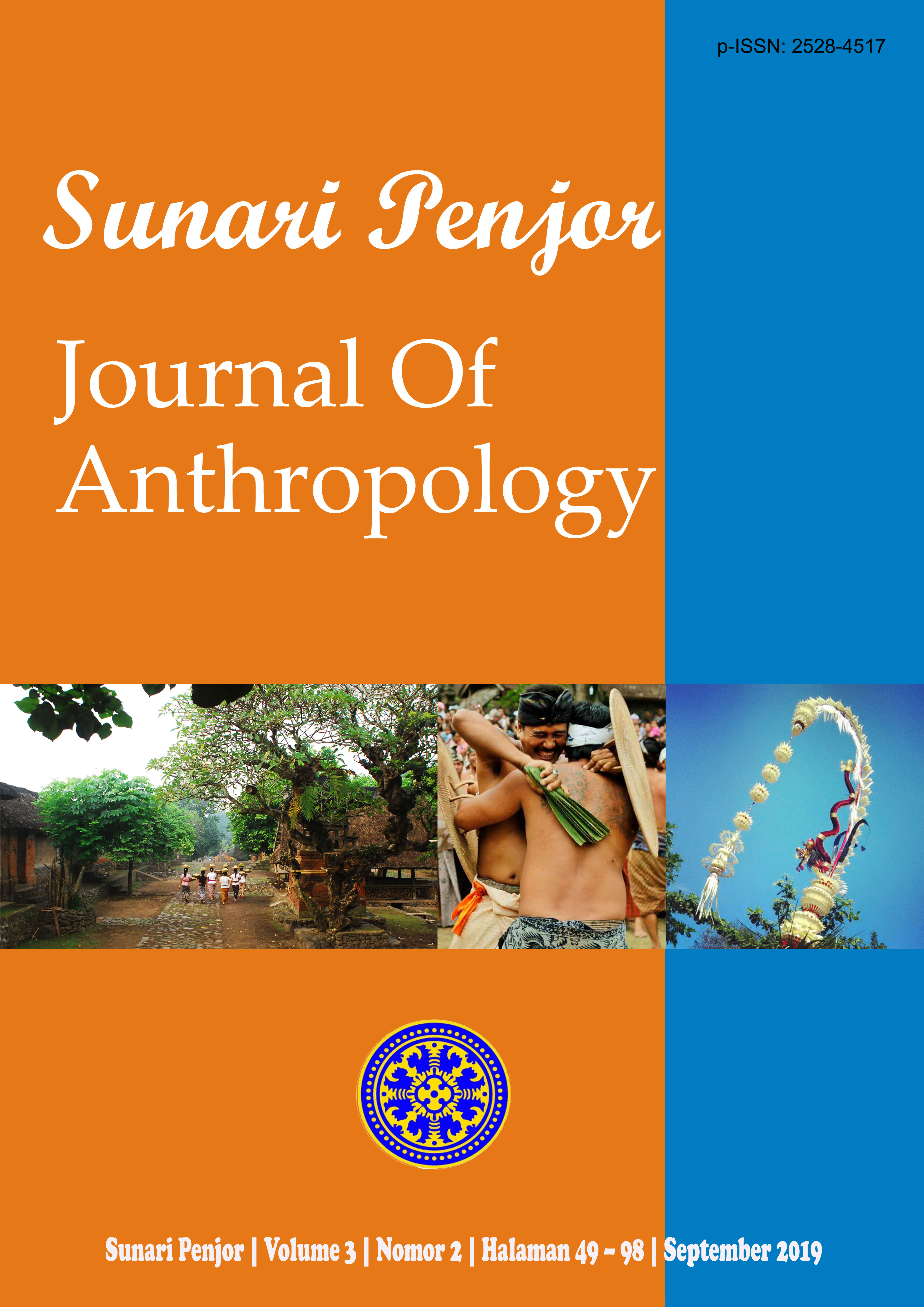Lelangan sebagai Sistem Perekonomian Tradisional di Desa Julah
Abstract
Julah village is an old village called Bali Mula village or Bali beginings, it is located in Tejakula District, Buleleng Regency, Julah village has a traditional economic system called lelangan or traditional auction market, the auction market is managed and maintained by the Julah Traditional Organization, especially as a valuable asset which is the main income for customary cash. To examine this problem, there are certain formulation used in this research, namely : 1) What are the characteristics of the traditional auction market in Julah village? 2) Why does the traditional auction market stll exist in Julah village? 3) What are the implications of the existence of a traditional auction market on social life in Julah village? The types of data used in this study are qualitative data and quantitave data as a secondary data sources obtained through observation, interviews, literature study and documents, the analysis used is descriptive analysis. This research uses Functionalism theory from Bronislaw Malinowski, Hierarcy of Needs theory from Abraham Maslow and theory of Personalitic Economics from Dewey and Szanton. The concepts in this research are existence, traditional auction market and modernization. The existence of the lelangan in the middle of the modernization era is due to cultural conservation carried out by the Julah Community and Customary Organization itself, the utilization of Julah’s natural resources in the form of village abian land or village – owned gardens whose garden products are auctioned off as a source of income for adat, besides that the community also has socio – economic function and functions of the arena of social interaction for the Julah Cummunity
Downloads
References
Anugrah, I. S. (2004). Pengembangan Sub Terminal Agribisnis (STA) Dan Pasar Lelang Komoditas Dan Permasalahannya. Jurnal Agro Ekonomi 22(2), 109.
Arimbawa, I. G. N. A. A & Marhaeni, A. A. I. N. (2017). Analisis Efektivitas Program Revitalisasi Pasar Tradisional Di Pasar Desa Adat Intaran Sanur. Jurnal Universitas Udayana 13(1), 18 – 19.
Faahitah, Et Al. (2014). Revitalisasi Pasar Terapung Lok Bintan Di Banjarmasin Dengan Pendekatan Arsitektur Kontekstual. Jurnal Arsitektura 12(2), 3.
Hendraswati. (2016). Etos Kerja Pedagang Perempuan Pasar Terapung Lok Baintan Di Sungai Martapura. Jurnal Pendidikan Dan Kebudayaan 1(1), 100.
Islamy. (2003). Prinsip-prinsip Perumusan Kebijakan Negara. Jakarta : Bina Aksara.
Jati, W. R. (2012). Dilema Ekonomi : Pasar Tradisional Versus Liberalisasi Bisnis Ritel Di Indonesia. Jurnal Ekonomi Dan Studi Pembangunan 4(2), 1.
Koentjaraningrat. (2014). Sejarah Teori Antropologi I. Jakarta: Universitas Indonesia Press.
Maslow, A. H. (1984). Motivasi Dan Kepribadian Dengan Ancangan Hirarki Kebutuhan Manusia. Jakarta: PT. Gramedia.
Monliasih, Et Al. (2017). Analisis Praktik Akuntabilitas Pengelolaan Keuangan Pelaba Pura (Studi Fenomenologi Di Desa Pakraman Julah, Kecamatan Tejakula, Kabupaten Buleleng). Jurnal Undiksha 8(2), 2 – 3.
Pramudyo, A. (2014). Menjaga Eksistensi Pasar Tradisional Di Yogyakarta. Jurnal Bisnis Manajemen Dan Akuntansi 2(1), 78 – 79.
Rajesh, R. (2010). Understanding The Process Of Market Relationship : The Indian Experience. International Journal Of Sociology and Anthropology 2(5), 73.
Riyanti, P. (2013). Relasi Sosial Pedagang Etnis Cina Dan Etnis Jawa Di Pasar Tradisional. Jurnal Unnes 5(1), 54.
Sairin, Et Al. (2002). Pengantar Antropologi Ekonomi. Jakarta: Pustaka Pelajar.
Sandiase, I. K. & Sari, I. W. W. I. (2015). Julah : Desa Bali Mula Di Tengah Arus Globalisasi. Jurnal Undiksha 1(2), 40 – 41.
Sarwoko, E. (2008). Dampak Keberadaan Pasar Modern Terhadap Kinerja Pedagang Pasar Tradisional Di Wilayah Kabupaten Malang. Jurnal Ekonomi Modernisasi 4(2), 108 – 109.
Sasanto, R & Yusuf, M. (2010). Identifikasi Karakteristik Pasar Tradisional Di Wilayah Jakarta Selatan (Studi Kasus : Pasar Cipulir, Pasar Kebayoran Lama, Pasar Bata Putih, Dan Pasar Santa). Jurnal Teknik Planologi 1(1), 6 – 7.
Spradley, J. P. (2007). Metode Etnografi. Jogjakarta: Tiara Wacana.
Sutami, W. D. (2012). Strategi Rasional Pedagang Pasar Tradisional. Jurnal Unair 1(2), 134.
Witari, Et Al. (2020). Variasi Pemanfaatan Tanah Pelaba Pura Dalem Di Desa Adat Kesiman, Denpasar. Jurnal Seni Budaya 35(1), 118.
Yusuf, A. M. (2014). Metode Penelitian: Kuantitatif, Kualitatif dan Penelitian Gabungan. Jakarta: Prenadamedia Group.














